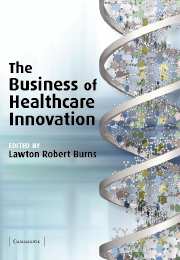Preface
Published online by Cambridge University Press: 22 September 2009
Summary
This book has been in the making for the past ten years, since I arrived at the Wharton School at the University of Pennsylvania. Located in Philadelphia, geographically Wharton is surrounded by pharmaceutical, biotechnology, and medical products companies. Our MBA student cohorts are filled with former and future employees from these companies, and our classrooms are continually filled with their executives, who visit Wharton to teach and recruit students. Increasingly, our course offerings in the Department of Health Care Systems have necessarily encompassed these sectors of the healthcare industry, and our faculty's academic agenda has adopted them as research topics.
A few years ago I published a four-year investigation of the flow of products, information, and money between the manufacturers of healthcare products, the distributors and organized buyers of these products, and institutional customers. That investigation, published as The Health Care Value Chain (2002), examined the trading relationships between (a) the providers of healthcare services such as physicians and hospitals (a traditional focus of scholarly inquiry) and (b) their upstream suppliers (a nontraditional focus for scholars). The book was the first formal analysis of supply chain relationships in the healthcare industry. It included separate chapters on three sets of manufacturers (or “producers”) of healthcare products: pharmaceuticals, medical devices, and medical-surgical supplies. In writing it, I realized there was no central source of information about the producer side of the healthcare industry. Most textbooks on the industry either ignored producers or focused on the regulatory side of the industry (e.g., the Food and Drug Administration).
- Type
- Chapter
- Information
- The Business of Healthcare Innovation , pp. xix - xxPublisher: Cambridge University PressPrint publication year: 2005

